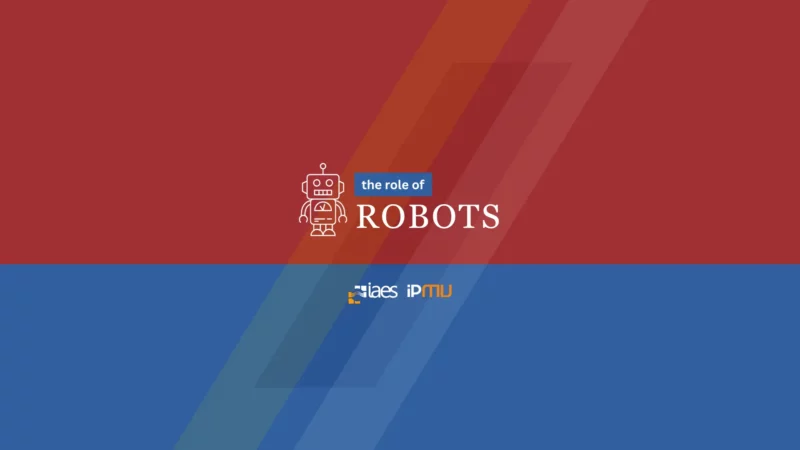Greetings, fellow Nawala! Hope you are always in good health.
This is the IAES Nawala of the Institute of Advanced Engineering and Science. Today we will share news about the development of the role of robots in human life. Robots have various roles in various sectors. Like their role in manufacturing, they can help with tasks such as welding and assembly processes. Healthcare benefits from robots that assist surgeons in precision procedures and support patient care. Agriculture uses robots to plant, harvest, and monitor crops. Education, entertainment, and personal use also benefit from robots, making tasks more convenient. Robots play an important role in making our lives easier, safer, and more enjoyable across a wide range of applications. In their research, Rokhim et al. (2023) created a robot to serve patients in a contact-less manner to prevent the spread of the COVID-19 virus.
CURe-Mi mobile manipulator robot for contact-less COVID-19 patients serving missions
Ismail Rokhim, Nur Jamiludin Ramadhan, Zainun Najakh
Since March 2020, coronavirus disease (COVID-19) has become a major global concern. Even in an emergency, medical personnel should avoid contact with COVID-19 patients. Mobile manipulators are a non-contact alternative to medical personnel for performing healthcare tasks such as distributing supplies to COVID-19-quarantined patients. In this study, patients use an Android application to order mobile manipulator robots, which include the Collaborative Manipulator Robot UR5e and the autonomous mobile robot MiR200 (abbreviated and referred to as CURe-Mi). The HTTP protocol is used for communication between the Android application and the robot. The experiment was conducted in a small room with several tables and bottles used to simulate hospital rooms and medications. The delivery testing results show that all four items were delivered successfully. The results of the manipulator robot and mobile robot movement accuracy tests show that the average error is 0.213 and 4.51 cm, respectively. The Android application performance test demonstrates that the application successfully sends commands to the mobile manipulator robot within its maximum range of 1,800 cm. The CURe-Mi mobile manipulator robot has successfully assisted medical personnel in handling several contactless COVID-19 patients serving missions.
The role of robots in helping humans has significant implications. Especially in developed countries such as the USA, Japan, and recently proposed by South Korea and China. Leonid (2023) revealed that population aging affects all countries and causes an increased burden on medical facilities and the need to increase medical staff. In his research, he revealed that there are alternatives to overcome these issues by migrating specialists or robotizing the medical industry using innovations in science and technology.
Competition on the medical robotics markets for elderly
Sobolev Leonid
Population aging becomes one of the most significant 21st century social challenges. These challenges strongly reflect on the industry, labor, and financial markets. Population aging increases the demand for medicines, diagnostic equipment, and medical services. Both developed and developing countries have problems resulting from the current shortage of health workers and a limited supply of medical equipment. An alternative for medical staff growth is the robotization of medical services. However, robotics is economically justified when the costs of medical robots are lower than the construction of additional medical clinics and the increase in medical staff. Medical robotics appeared on the market later than the industrial and military ones but has recently found increasing use in high-income countries. Low and middle-income countries could not acquire expensive medical robots in sufficient quantities. The increased competition in the medical robotics market will lead to price reductions and make robotized services available for wide use. The article analyses the competition in segments of the medical robotics markets, connected with population aging.
The role of robots continues to evolve and expand as technology advances. They are increasingly integrated into various aspects of our lives, making tasks more efficient, safer, and sometimes more fun. Some of the articles above are a small part of the research on the development of robots in assisting human activities. To get more information, readers can visit the IAES International Journal of Robotics and Automation (IJRA) page and read articles for FREE through the following link: https://ijra.iaescore.com/.

